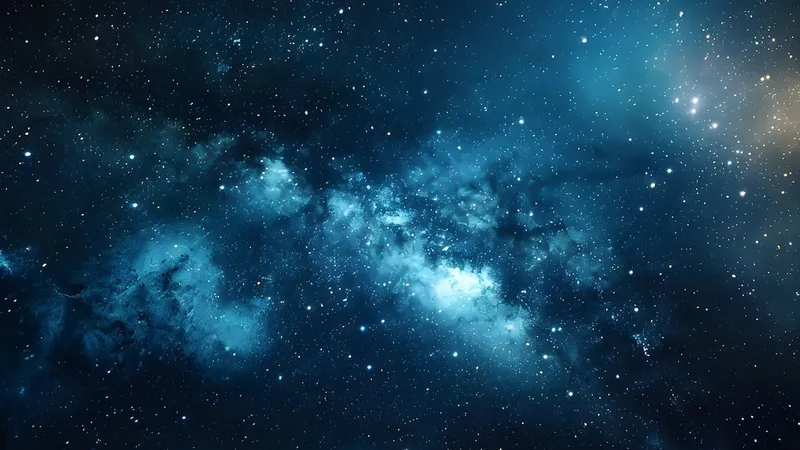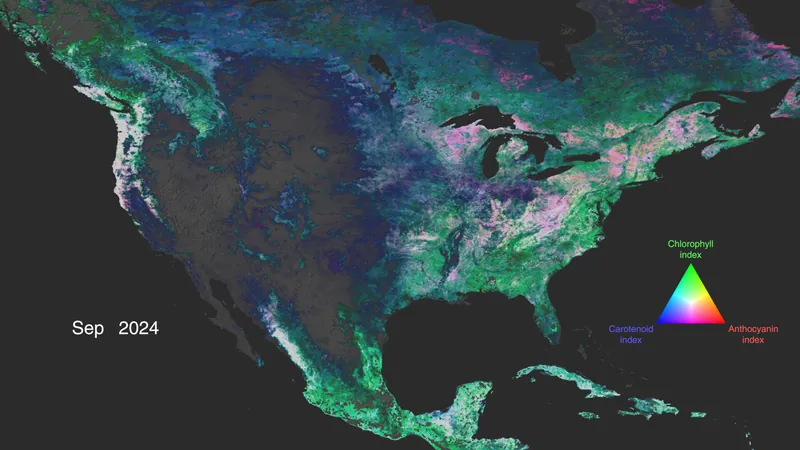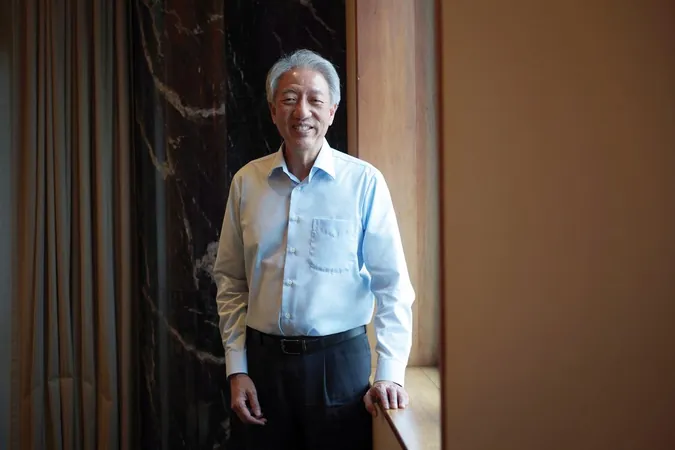
Revolutionary Discovery Suggests Cosmic Voids Could Replace Dark Energy in Explaining the Universe's Acceleration!
2025-01-21
Author: Mei
Revolutionary Discovery Suggests Cosmic Voids Could Replace Dark Energy in Explaining the Universe's Acceleration!
In an intriguing twist for the field of cosmology, a team of scientists asserts that dark energy—a theoretical force long accepted as responsible for the accelerating expansion of the universe—might not even exist. This groundbreaking research, published in December 2024 in the Monthly Notices of the Royal Astronomical Society, challenges a fundamental pillar of modern cosmology.
The study leverages data from the Pantheon+ survey, the most comprehensive catalog of type Ia supernovae to date. This dataset, which encompasses observations from both ground-based and space telescopes over the years, allows astronomers to measure intergalactic distances with unprecedented accuracy. Researchers propose that what we interpret as the universe's gradual acceleration could actually stem from large-scale cosmic structures rather than dark energy.
Understanding Type Ia Supernovae
Type Ia supernovae are stellar phenomena that occur when a white dwarf star accumulates enough mass from a companion star, leading to a thermonuclear explosion. These celestial events have earned their place as essential tools in cosmology because their peak brightness remains consistent across different occurrences. This property enables scientists to utilize them as 'standard candles' to gauge vast expanses of space.
Dr. Zachary Lane, a co-author and researcher from the University of Canterbury in New Zealand, emphasized the importance of these supernovae. "They provide an invaluable means to measure extensive distances in the universe," he noted, highlighting their pivotal role in mapping cosmic growth over time.
The Power of the Pantheon+ Dataset
The Pantheon+ dataset comprises a staggering 1,500 supernova observations, offering scientists a wealth of data to explore the complexities of the universe. As the largest collection of purely Type Ia supernovae, it presents an extraordinary opportunity to test various cosmological models and examine alternative theories beyond the standard model that incorporates dark energy.
Rethinking Dark Energy
Though dark energy has been a cornerstone for explaining the universe's accelerating expansion, its mysterious nature—being undetectable and theoretically unexplainable—has sparked curiosity among researchers. The study put forth by Lane and his team questions the long-held assumption that the universe is uniform in structure and behavior on a grand scale.
Instead, they explore the "timescape model," positing that the observable universe's acceleration could be attributed to cosmic voids—enormous, empty regions of space situated between galaxy clusters. According to this model, these voids grow rapidly due to their minimal matter density and gravitational pull, which accelerates their expansion pace relative to denser areas like galaxy clusters.
Evidence Supporting the Timescape Model
Upon analyzing the Pantheon+ dataset, the researchers found a compelling alignment with the timescape model, often surpassing the predictions made by the standard cosmological model. "When we evaluate every supernova, we observe a notable preference for the timescape framework," Lane pointed out. Excluding nearby supernovae to account for localized gravitational effects still yielded strong evidence favoring the new model.
This finding poses a direct challenge to the necessity of dark energy in our understanding of the cosmos. Lane expressed excitement about the implications: "The persistent indication of a cosmological model that does not require dark energy, highlighted through such a significant observational method, signals a thrilling chapter for cosmology."
What Lies Ahead?
While these findings offer a promising glance at potential alternatives to dark energy, Dr. Lane and his colleagues emphasize that additional research is critical for further validation of the timescape model. Their future initiatives will involve integrating data from the Dark Energy Survey and patterns from baryon acoustic oscillations, as well as conducting simulations to further evaluate the dynamics of cosmic voids.
"Our research group is delving into various extensions of this work, intending to tackle foundational challenges within cosmology," Lane concluded. The prospect of a strong alternative framework not only enriches our understanding but also propels cosmology into an exciting new era of inquiry and discovery. Stay tuned as scientists continue to investigate the profound mysteries of our universe!





 Brasil (PT)
Brasil (PT)
 Canada (EN)
Canada (EN)
 Chile (ES)
Chile (ES)
 Česko (CS)
Česko (CS)
 대한민국 (KO)
대한민국 (KO)
 España (ES)
España (ES)
 France (FR)
France (FR)
 Hong Kong (EN)
Hong Kong (EN)
 Italia (IT)
Italia (IT)
 日本 (JA)
日本 (JA)
 Magyarország (HU)
Magyarország (HU)
 Norge (NO)
Norge (NO)
 Polska (PL)
Polska (PL)
 Schweiz (DE)
Schweiz (DE)
 Singapore (EN)
Singapore (EN)
 Sverige (SV)
Sverige (SV)
 Suomi (FI)
Suomi (FI)
 Türkiye (TR)
Türkiye (TR)
 الإمارات العربية المتحدة (AR)
الإمارات العربية المتحدة (AR)